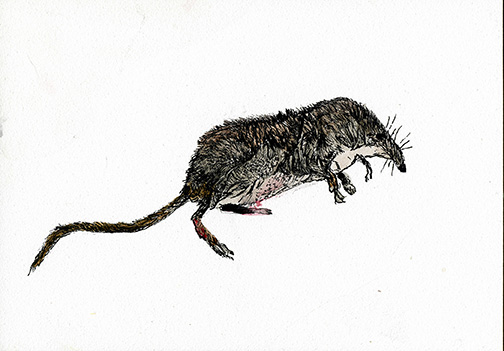Rainbow Trout
…

The masked shrew (sores cinereus) is the most widely distributed shrew in North America. It is very small with a pointed snout, grey brown fur and a light grey underside. Apparently a masked shrew’s body size is less if it lives where it is colder - and they live all over the place. Moisture is a determinant of shrew abundance but otherwise they inhabit grasslands, marshes and tundra.
Masked shrews are opportunistic generalists. That means they will eat almost anything - insects, seeds, small rodents, small amphibians, worms and snails. They have a very high metabolism and can survive only a few hours without food. They can eat three times their body weight in one day and are very susceptible to parasites like fleas and tapeworms, particularly because they eat so much. They are also food for many predators; hawks, owls, shrikes,snakes, herons, foxes, leopard frogs, bluebirds, brown trouts and weasels.
Shrews dig tunnels and use those made by other animals, making nests of dry grass in those tunnels. They are born in spring and summer, grow to adulthood over the winter and are ready to breed in the spring. They often don’t live for more than a year.
Masked shrews are not at all fond of other masked shrews.